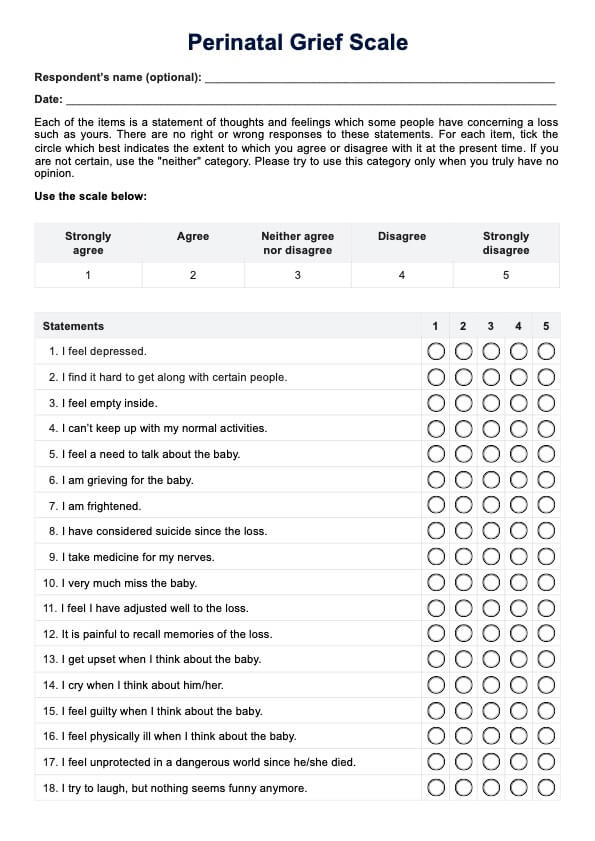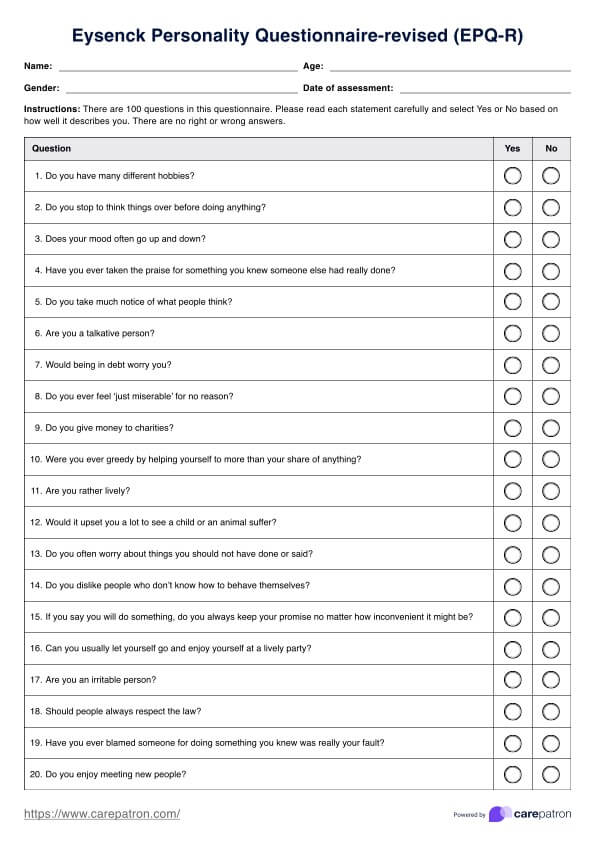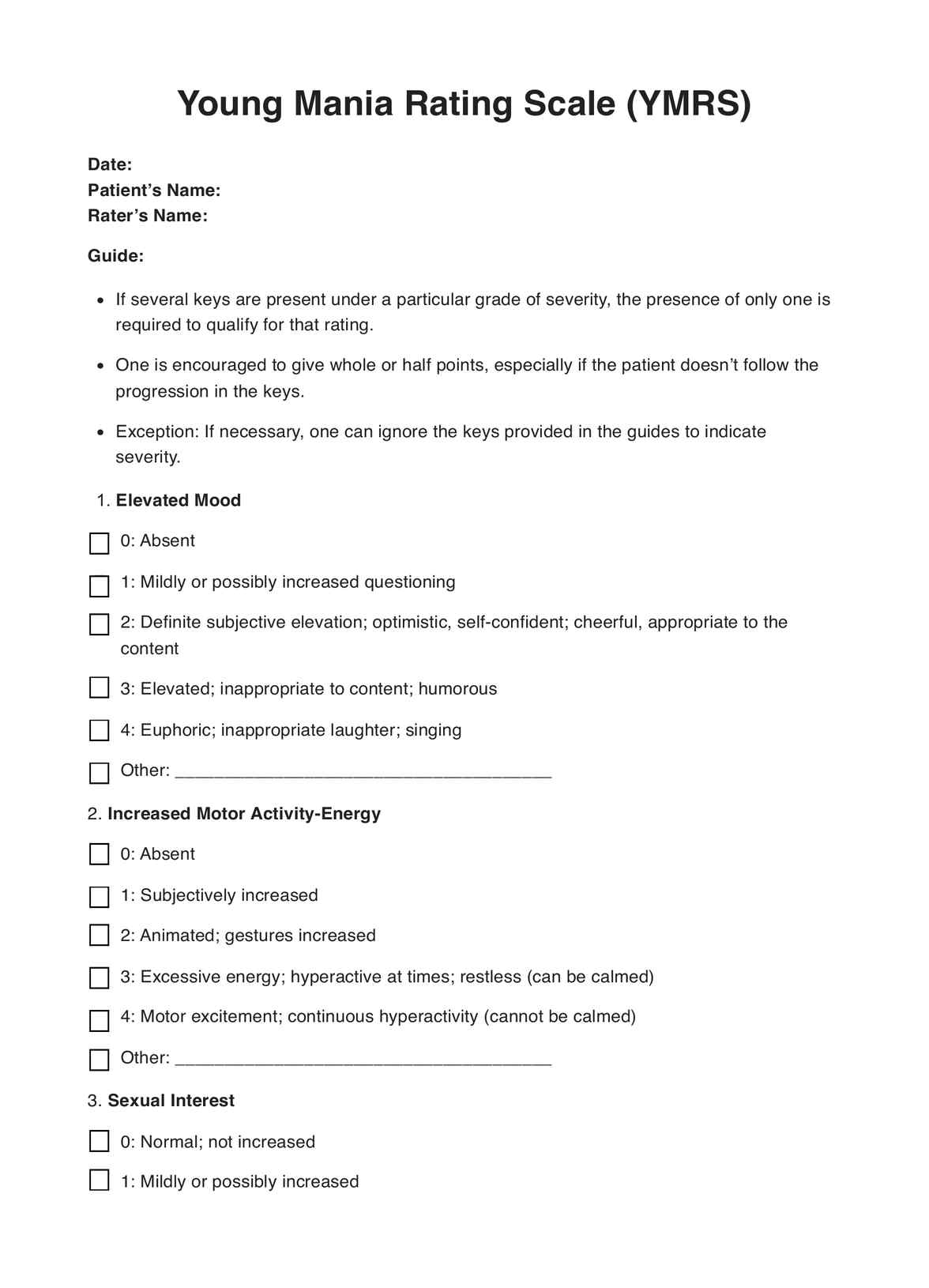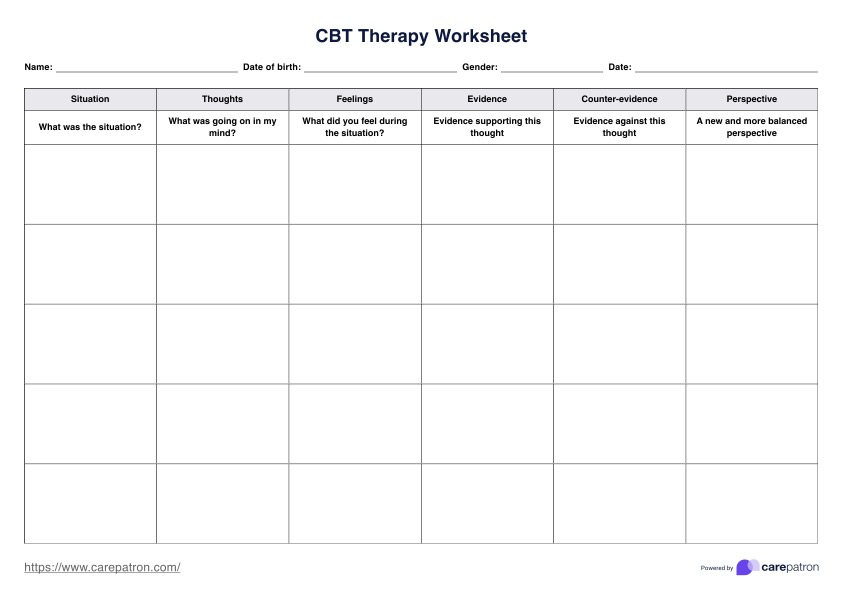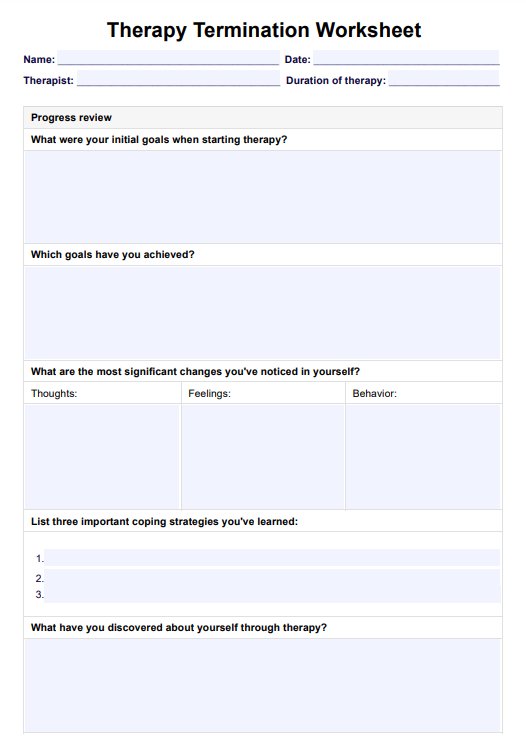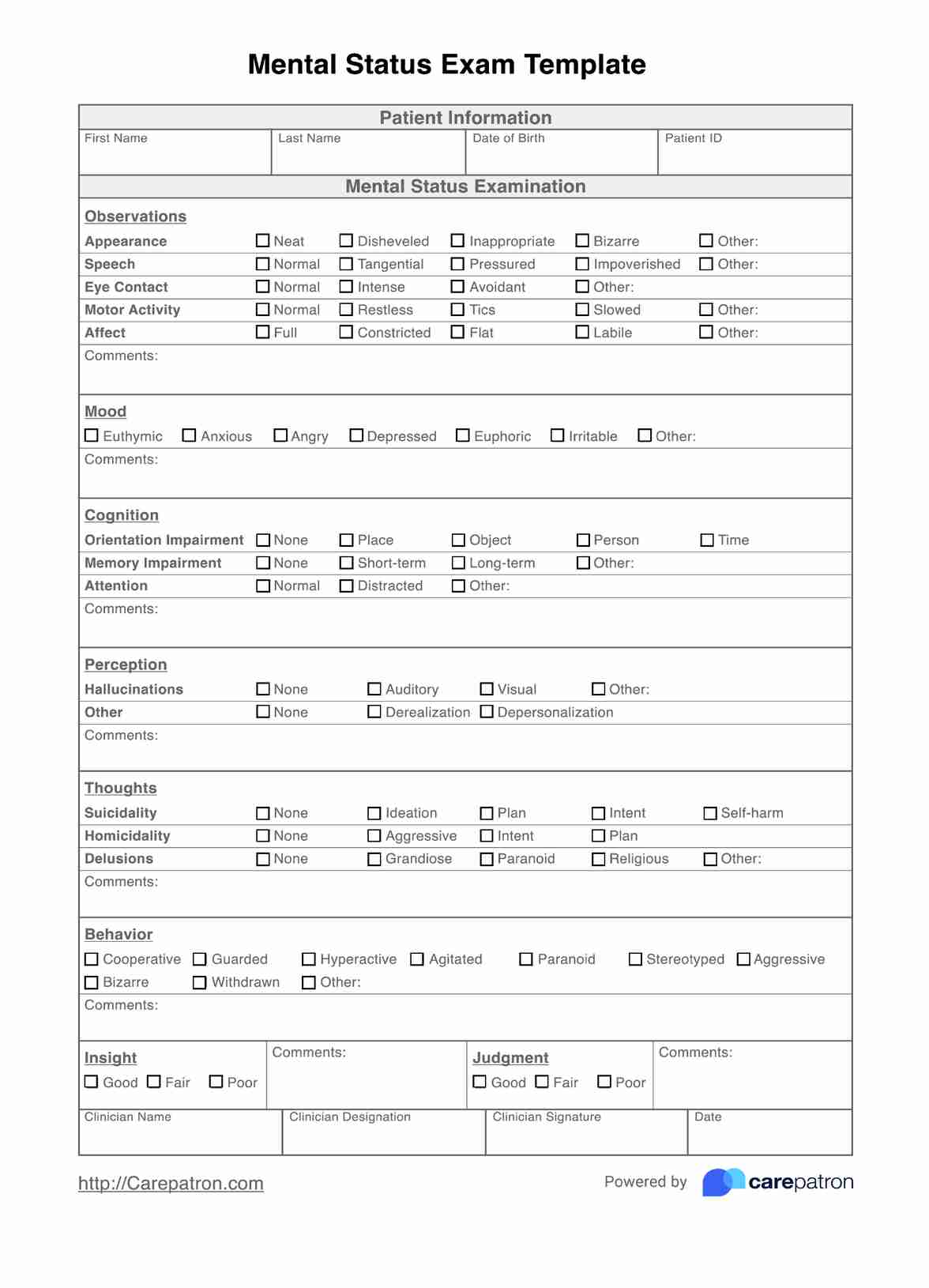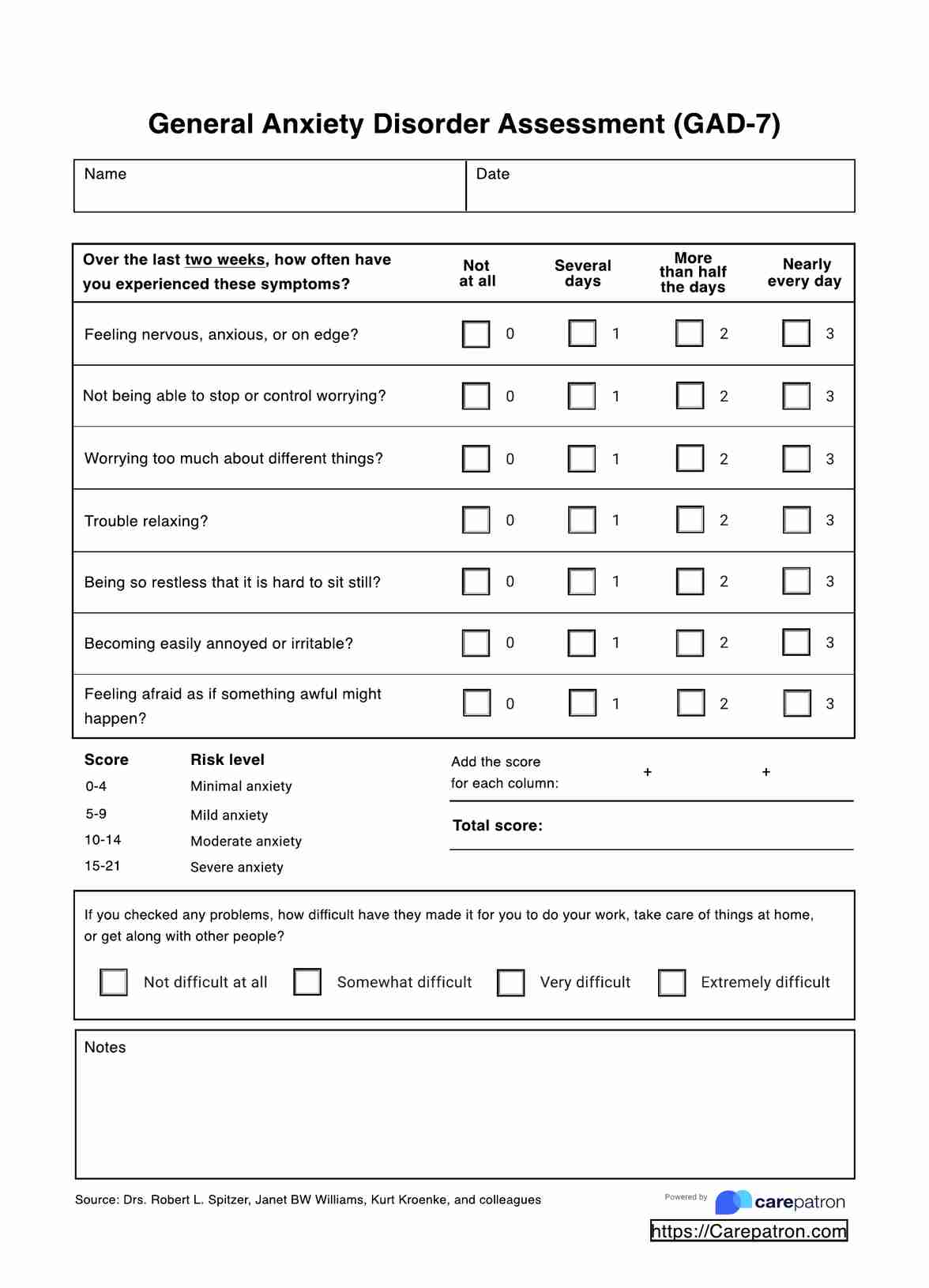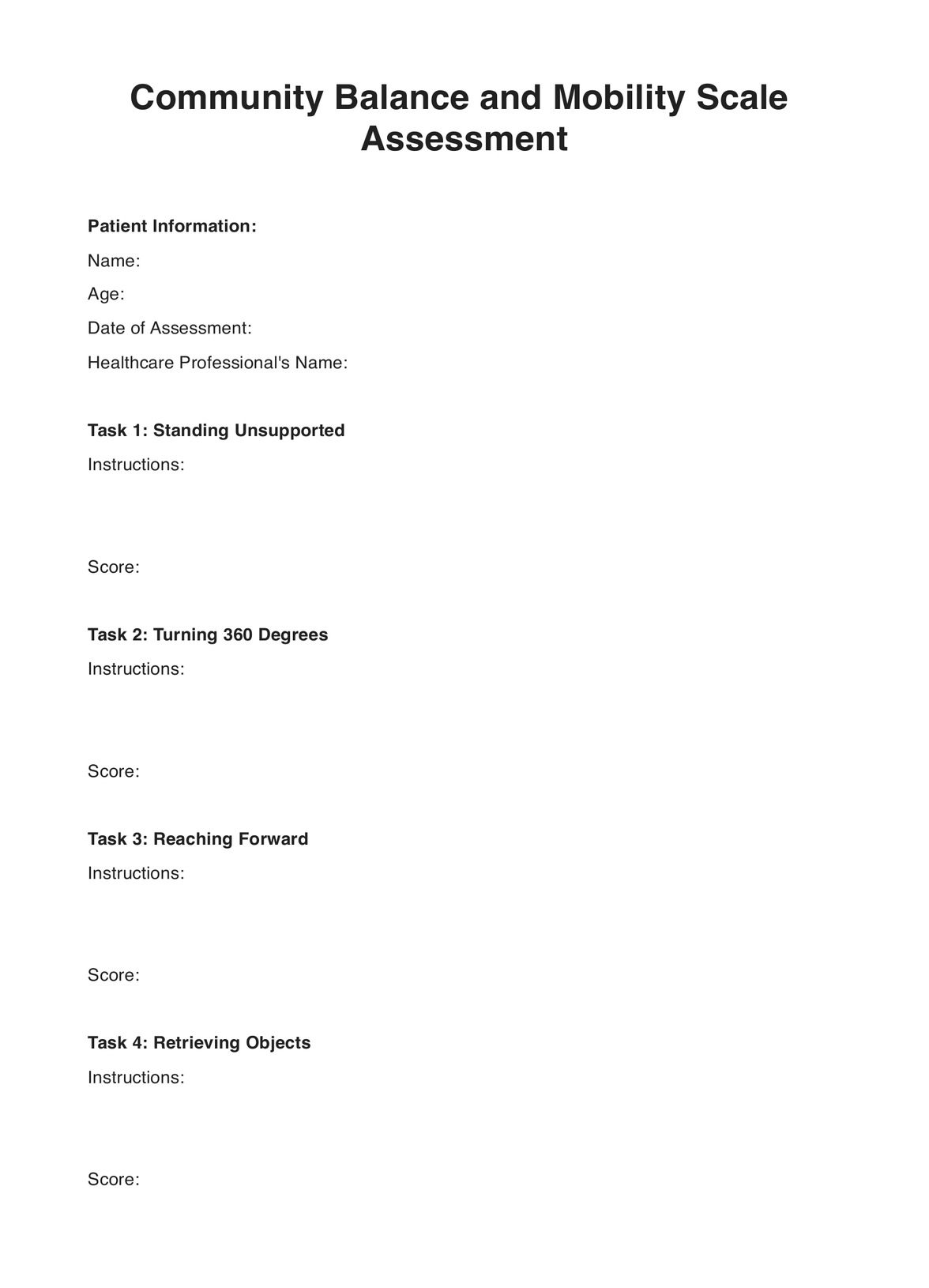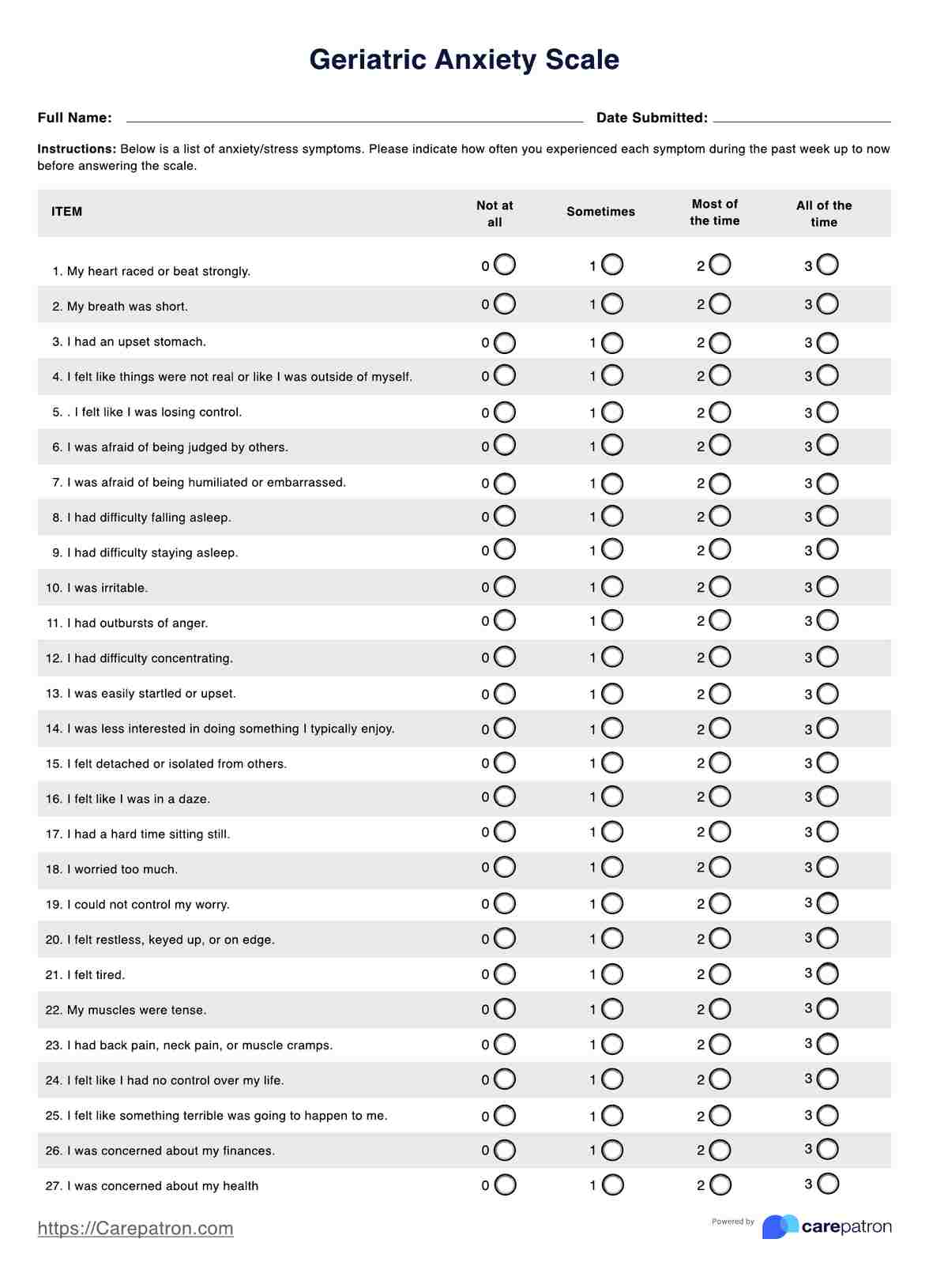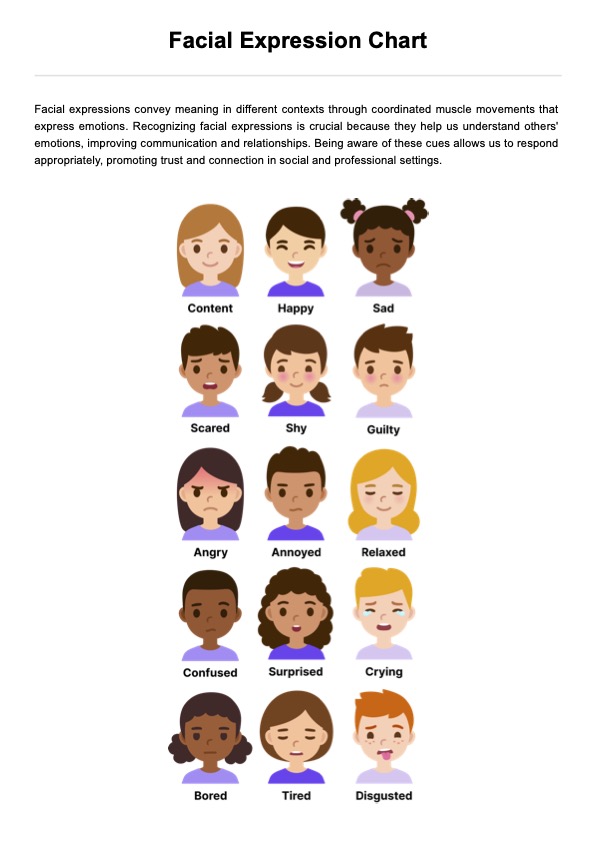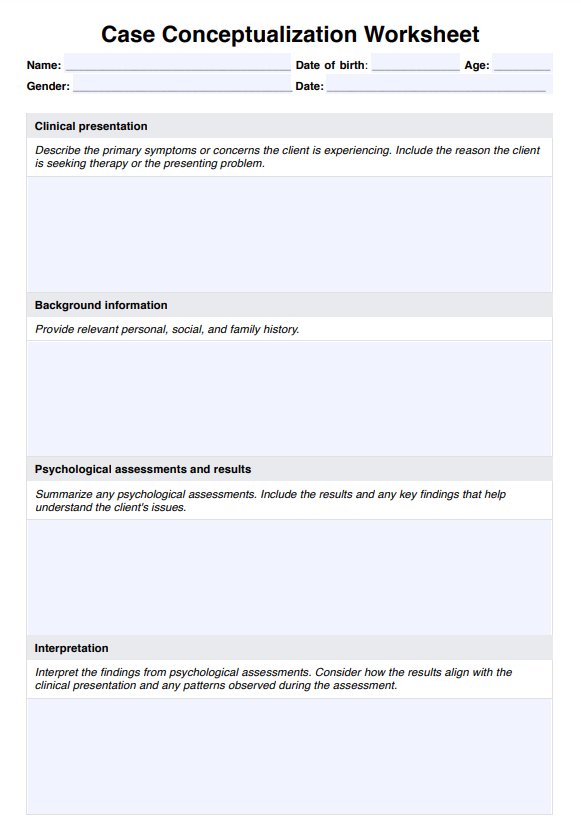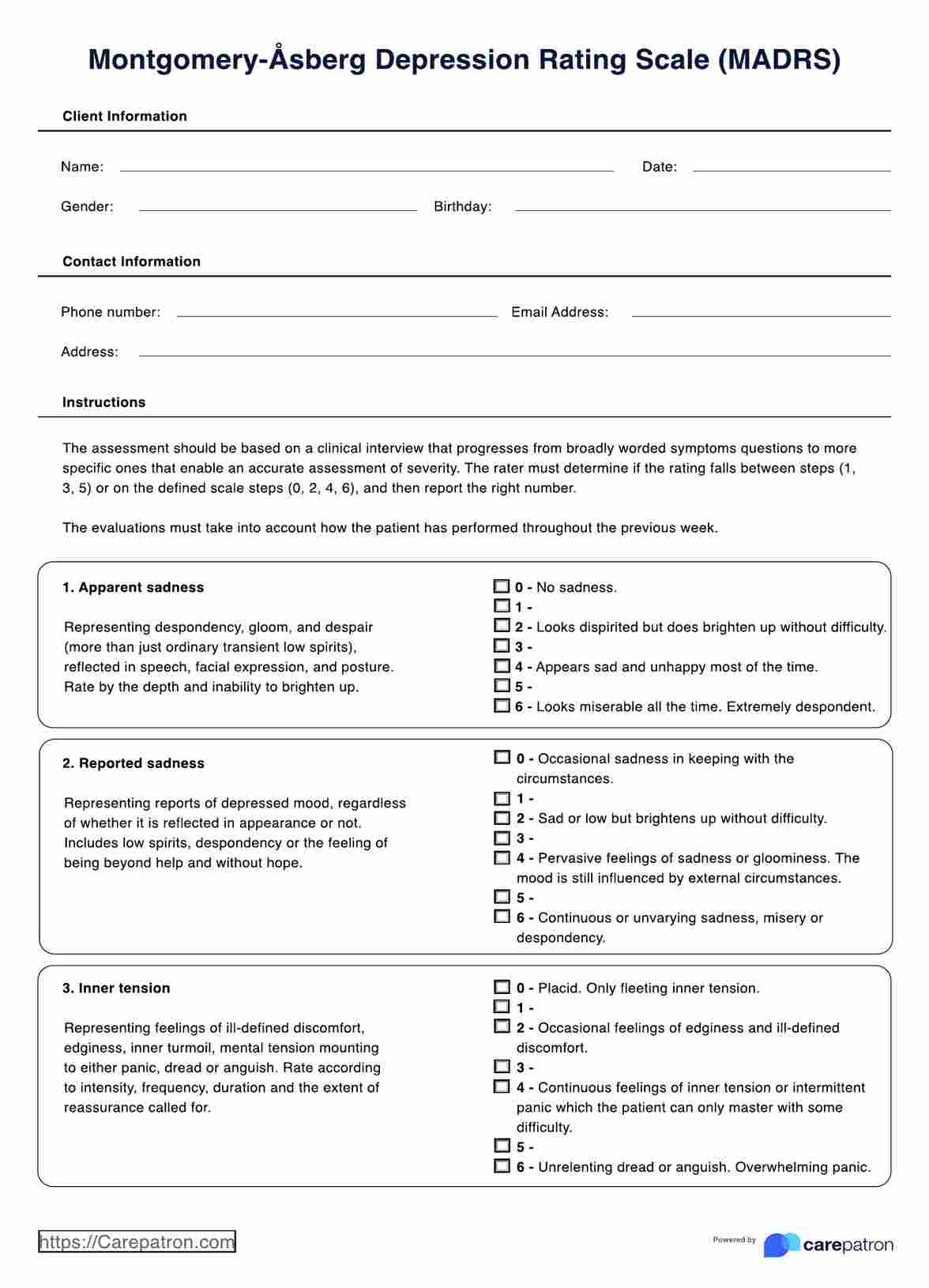Circle Of Control Worksheet
Use this free Circle of Control Worksheet to help your patients process and manage their anxiety, anger, and stress to build resilience and regulate emotions.


What is the circle of control?
The circle of control is a tool or worksheet that practitioners, from mental health practitioners to therapists/counselors to primary care doctors, use to help patients manage and process their feelings, specifically when they feel overwhelmed, anxious, angry, disappointed, and worried.
First, the circle of control has three concentric circles that tackle controllable and uncontrollable aspects of life. Each circle has its name: circle of control, circle of influence, and circle of concern. Then, per circle, there’s a specific set of thoughts, things, or circumstances that a patient can write inside. To explain further:
- Circle of concern (outmost circle): Also known as the outer circle, the patient can write things they cannot influence or control but believe to affect their daily life. Examples are the weather, the pandemic, their past or future, etc.
- The circle of influence (circle between concern and control): This is where the patient writes what they cannot control but can still make a difference. What to place inside the circle of influence will vary since it’s dependent on the patient’s creativity, self-confidence, capabilities, etc. Here, clients can note what they can change regarding their behavior, thinking, attitude, and/or influence. While there is indirect control over the situation, clients can influence how their actions respond to others.
- Circle of control (innermost circle): Also known as the inner circle, this is where the patient writes down the aspects of life that are directly affected when they make decisions. Examples are one’s thoughts, work ethic, self-perception, etc. This circle encompasses what clients can exert control over.
Circle Of Control Worksheet Template
Circle Of Control Worksheet Example
How does this Circle Of Control Worksheet work?
Our Circle of Control Worksheet is pretty straightforward to use, especially if you are familiar with the tool. However, if you need guidance, feel free to check out our step-by-step instructions on how to make the most of the circle of control printable or digital worksheet.
Step 1: Set up an appointment
Before giving the patient a copy, it's best that they set up an appointment with you to gauge if this is the template for them or if the needed intervention requires a more comprehensive test/session.
Should this be the one that aids them in their concerns, they can also benefit from having an appointment with you because you can guide them through filling out this worksheet.
Step 2: Download the template
Download a copy of the Circle of Control Worksheet template through either of these steps:
- Click the “Use template” to open and customize it within the Carepatron platform or “Download template” to get a fillable PDF.
- Search for “Circle of Control” in our template library on the website or platform.
Step 3: Fill up the template
Give your patients a copy of the worksheet or fill it out with them during your session. You may provide them with guiding questions or have them enumerate the problems they may be facing in different areas of their life. Prompting is allowed, especially if the patient seems stuck in the blank circle they are filling out; however, it must only be used as a last resort. Alternatively, you can create and show a control poster as a supplementary visual aid.
Step 4: Go over the answers
The next steps will vary depending on the patient. To check if your patient needs a helping hand, you should review their answers until everything is clear. Some may want to be independent and handle things independently, while others may need more clarity or advice.
Step 5: Make notes
At the end of every session, you may make notes that you, other practitioners, or the patient may refer to when they find themselves in the same boat.
When to use these worksheets for the circle of control?
Though our Circle of Control Worksheets can be used in various situations, here are specific settings where they may be handy:
At therapy
Whether it's an individual, marriage, family, or group therapy, those facilitating these sessions may find our worksheets helpful in identifying problems and aiding their clients in processing their emotions and how to deal with possible future concerns they may have proactively.
However, note that before a worksheet is done with a couple, group, or family, you must ask for consent from all individuals involved. They may be uncomfortable sharing if their partner or family member is why they're having problems.
At school
Children and adolescents face challenges at school and home, which may affect their mental health and performance. If students are uncomfortable sharing with adults at home, school counselors and psychologists may make the child aware they can express their feelings of worry using our provided template. An intervention to assist students such as the ones mentioned is especially needed if they're exhibiting behavioral problems that may have stemmed from repressed or unprocessed feelings.
At work
Productivity and employee happiness are affected if individuals are preoccupied with work-related concerns. By allowing employees to identify what they can or can't control within their responsibilities using our template, they're empowered to make the right decisions that can positively affect themselves, their co-workers, and, effectively, the company.
Benefits of the Circle Of Control Worksheet
Just like there are a number of uses for the Circle of Control Worksheet, there are also a number of benefits to conducting the Circle of Control exercise and using the worksheet template. Here's a list of some of them below:
Simple to use
With an uncomplicated worksheet, patients won't be intimidated by filling out the template themselves. Moreover, there's no right or wrong way to answer the sheet and guiding questions. Patients are encouraged to respond according to what they feel is right.
Improves communication
After a patient answers the worksheet, it is highly encouraged that they process their feelings and go through their answers with you, the practitioner. As an outsider to their life, you can provide advice such as deciding which things should be let go of or making them aware that they can control certain aspects of a concern.
Establishes baselines
Using this activity during your session will help you determine whether the management or treatment plan you provided the first time improved or declined the patient's mental health.
Empowers the patient
In some instances, patients may want to handle their concerns on their own. By understanding their own abilities and shifting their own attitude towards control, they can focus on what they can control and make better decisions that will benefit them, their health, and even their self esteem.
Improves relationships
Not only does the practitioner get to know more about the patient and effectively develop trust, but the patient also has the opportunity to see what relationships in their life they should strengthen or end for their mental health.
Reference
Covey, S. (1989). The 7 Habits of Highly Effective People: Powerful Lessons in Personal Change. New York, USA: Simon & Schuster.
Commonly asked questions
The person behind the circle of control is Steven Covey (1989), who introduced it in his book The Seven Habits of Highly Effective People.
It aids practitioners and patients in identifying the cause of a patient’s overwhelming feelings and guides them on how to process and manage them.
It’s as simple as either filling it out alongside the patient or giving them a copy to answer independently. For a more comprehensive step-by-step, please refer to the “How does this Circle of Control Worksheet Work” section.


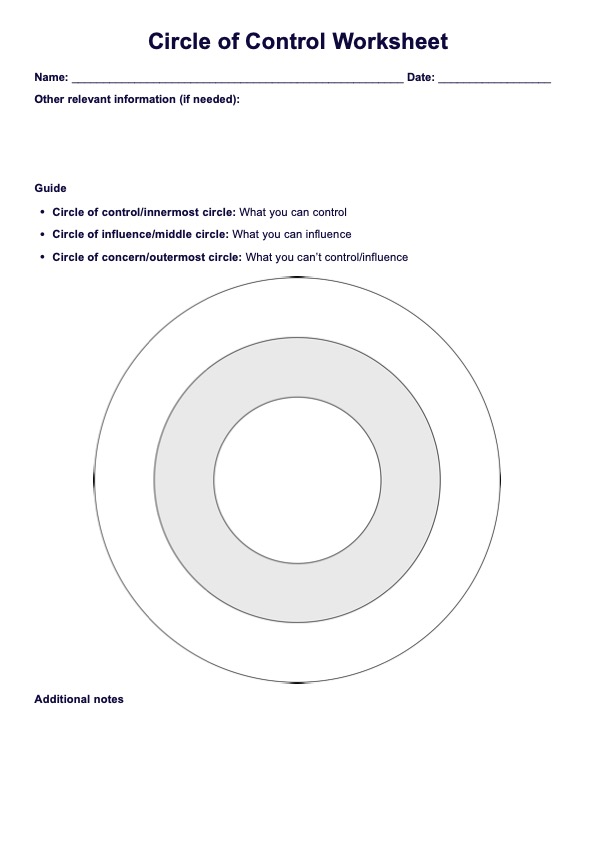
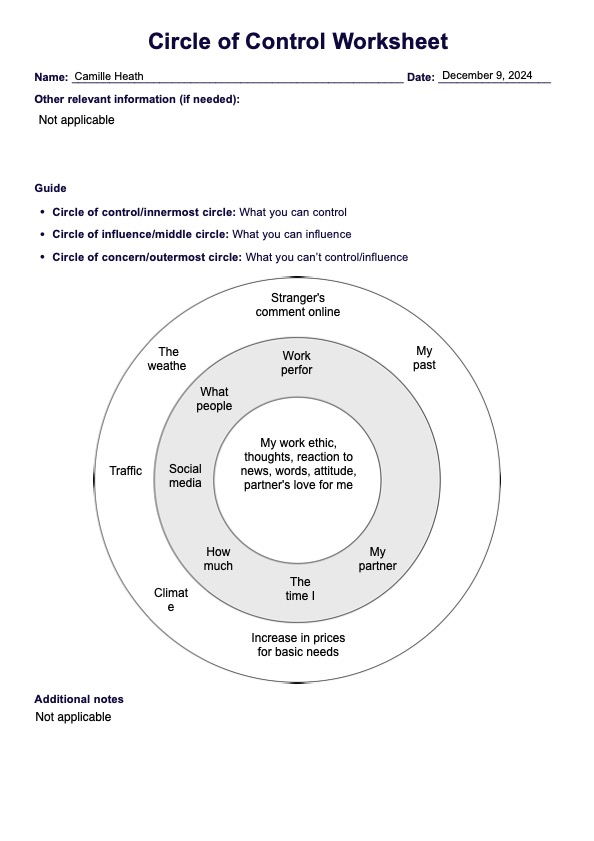

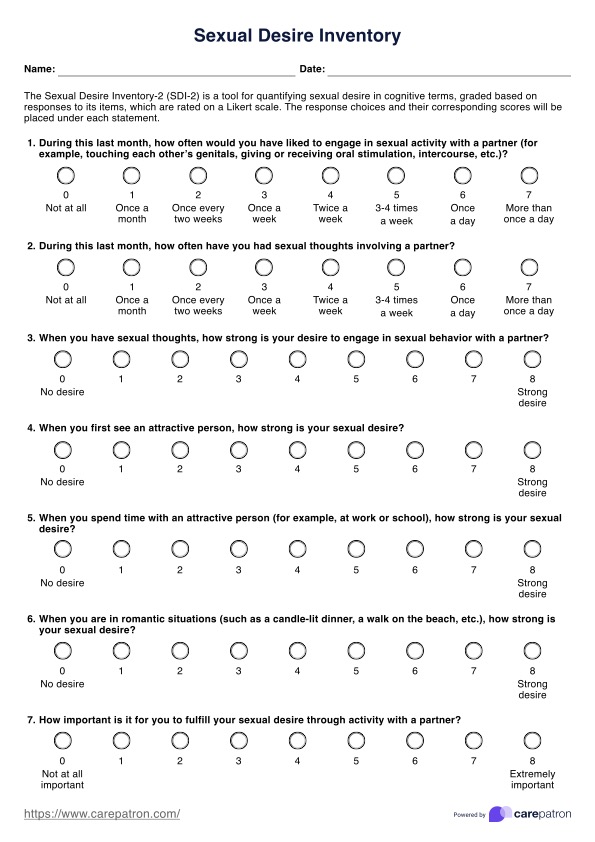
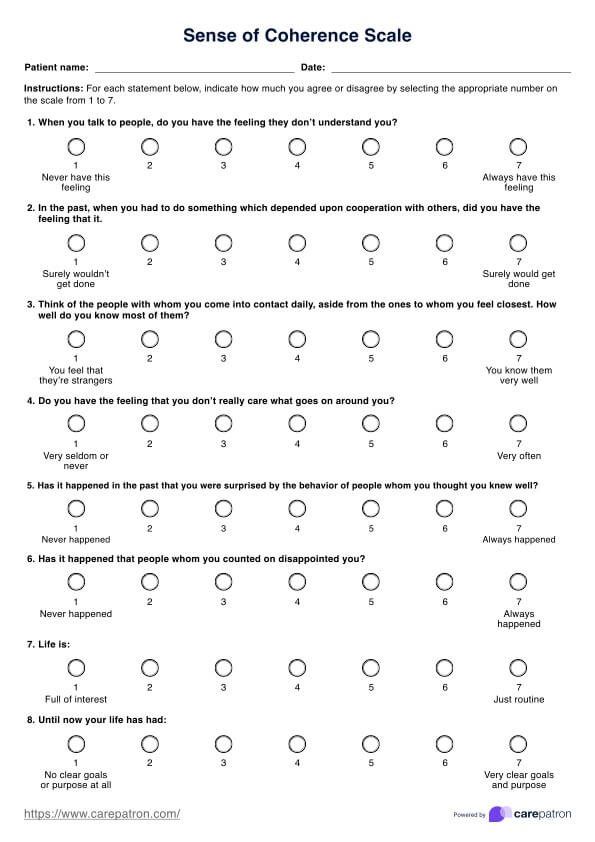
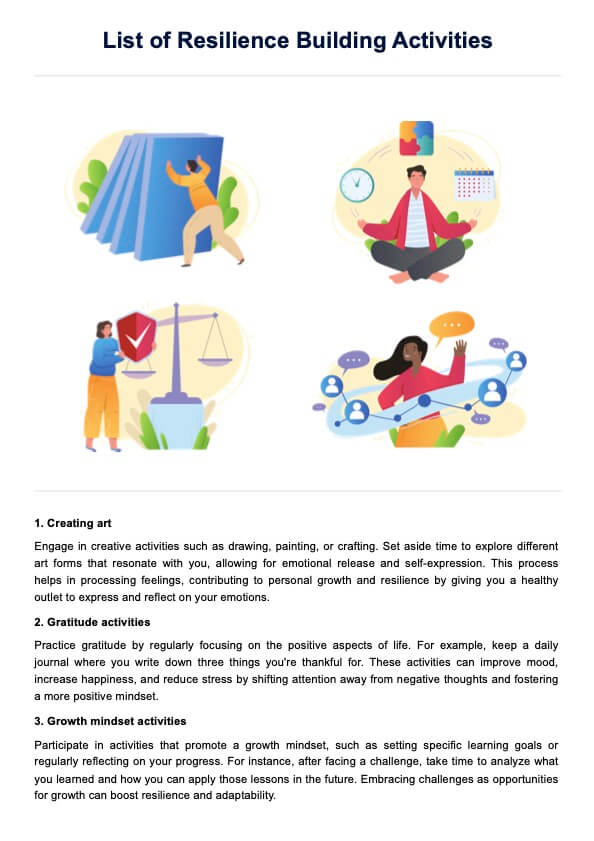









-template.jpg)





















































































